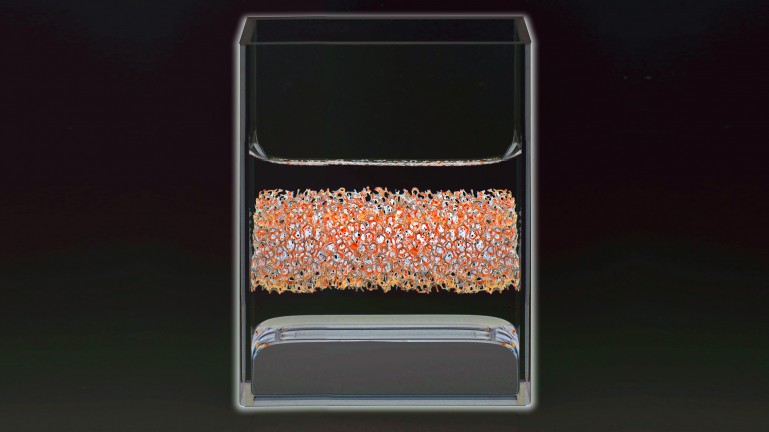
It can be argued that one of biggest hurdles in proliferation of renewable energy is the inability to store the energy in a cost effective manner. Pursuing this endeavor, a team of researchers from MIT have devised a new all-liquid battery that’s low enough in cost to make solar and wind energy a more competitive alternative to traditional sources of energy.
The issue in adopting renewable energy is not the lack of batteries to store power from solar panels or wind turbines, but that the cost of the solid batteries for this purpose exponentially grows in relation to the size of the battery. Meaning, it’s not economically feasible to expand solar or wind energy facilities to encompass the greater part of the electric grid if there’s no way to efficiently store energy reserves. Led by Donald Sadoway, professor of Materials Chemistry, the MIT team believes the solution lies in an all-liquid battery filled with layers of molten metals of varying densities that separate in much the same way oil separates from water. Liquid batteries are longer lasting than their solid counterparts and are easier to manufacture.
Before the current prototype, Professor Sadoway used magnesium for one electrode, antimony for the other, and molten salt as the electrolyte; but, these elements needed to be heated to 700° C (1,292° F) in order to operate. In the current prototype – featured in the team’s latest findings – Sadoway replaced magnesium with lithium in one electrode, and combined antimony with lead in the other. The concoction lowered the operating temperature to 450-500° C (842-932° F) and to the surprise of the researchers, retained the higher voltage of the antimony.
“We hoped (the characteristics of the two metals) would be nonlinear,” Sadoway says. “They proved to be (nonlinear), but beyond our imagination. There was no decline in the voltage. That was a stunner for us.”
The team charged and discharged the battery for 1,800 hours to test the battery’s long term vulnerability. It was then determined that the all-liquid battery maintains 85% of its initial efficiency, an especially attractive figure in light of the fact that pumped hydro – the currently most widely used system for utility-scale energy storage – only returns about 70% of its initial power. Another distinction is that the all-liquid battery can technically be built in any location, whereas hydro pumps require an available hillside.
Following this successful model, the MIT team will continue experimenting with other combinations of metals that may yield even better results; namely, lower-temperature, lower-cost, and higher-performance systems. “Now we understand that liquid metals bond in ways that we didn’t understand before,” adds Sadoway.
Via MIT
Advertisement
Learn more about Electronic Products Magazine





